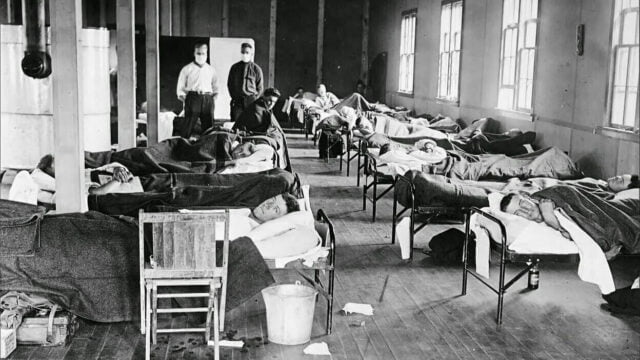COVID-19 has resulted in mayhem and disorder all over the globe. While some countries battled effectively against it and achieved success, a few others like ours could not do as well as expected.
While our country is putting in all the resources and efforts to control the situation, we are reminded of the history of Hyderabad, how it was hit by plagues and epidemics and how it emerged out as a metropolitan.
Catastrophic Flood And The Deadly Plague That Hit Hyderabad Around 1910
Charminar, the architectural wonder in Hyderabad, was constructed in 1591 to symbolize the end of a deadly plague in the city.

Epidemics and plagues were not unknown back then. But the incident that changed the face of this city occurred in 1911.
Hyderabad stands on the banks of Musi River, whose waters resulted in a catastrophic flood in September 1908. Around 15,000 people lost their lives when the river went past its boundaries, flooding the city.

Just three years later, when the wounds of people who lost their loved ones and entire life savings were still fresh, a deadly plague hit the city. It seemed like the Almighty was testing the city’s capabilities to prove its worth, and as we know now, it did!
Bubonic Plague hit the walled city and took the lives of thousands of people. The municipal commissioner was informed about this pestilence on August 25, 1911, and the death toll increased exponentially within days.
As a result of this unfortunate event, almost half of the city’s population was forced to live in quarantine camps that were set up near religious places.
Read More: The History Behind Choosing 15th August As India’s Independence Day
Change In The Landscape Of Hyderabad After 1911
The devastation caused by 1908 floods proved that there was an alarming need to revamp the city’s infrastructure. The subsequent plague also showed it was high time to implement changes in the city’s health infrastructure and hygiene facilities.
A proper plan was devised to build the city’s defence against any calamity after the floods, but it was only after the Bubonic plague that the city got its first urban development authority called the Hyderabad City Improvement Board (CIB) in 1912.
Nampally, the most severely affected district by the plague, was levelled to the ground and houses were built for people, as per their economic status. Roads, bridges, sewers, etc were constructed to improve the condition of the city.

The face of Hyderabad changed overnight! The world saw a city of mud houses, with a poorly planned infrastructure transform into a wonderland. Lush gardens, advanced railway stations, furnished courts were few of the additions that made it a ‘modern’ city.
Densely populated areas were decongested by fabricating a detailed house model. The river Musi was cleaned and the land on the other side of the river was explored. All the houses were connected to a drainage facility.
Burial and cremation grounds were built separately for hygiene.
A Better, Cleaner Hyderabad
Thanks to this revamp, the mortality rate by epidemics could be lowered. Cleaner roads, with proper sunlight and air, and decongested colonies ensured less number of outbreaks.
The department worked with diligence to educate people about anti-plague measures.
As a result, the Spanish Flu that hit the country in 1918 and killed thousands of people could be controlled in Hyderabad. Hyderabad was not going to let any more epidemics, cholera outbreaks, or influenza harm its people.

An example was set. Now, in these unforgiving times, when a pandemic has put all humanity to test, it is time to learn from this city of Nizams and rework our priorities.
Sources: Times of India, The Hindu, Telangana Today
Image Credits: Google Images
Find The Blogger at: @TinaGarg18
This post is tagged under: Hyderabad, revamp of Hyderabad, Telangana, Charminar, Hyderabad’s deadly plague, Musi river flood, 1908 Hyderabad floods, Bubonic Plague in India, 1918 Bubonic Plague, 1911 Plague, Hyderabad City improvement board, Modern Hyderabad
Other Recommendations:
Delhi’s Khan Market Was Set Up In 1950s To Rehabilitate 70 Pakistani Refugee Families At 50 Rs. Rent






























